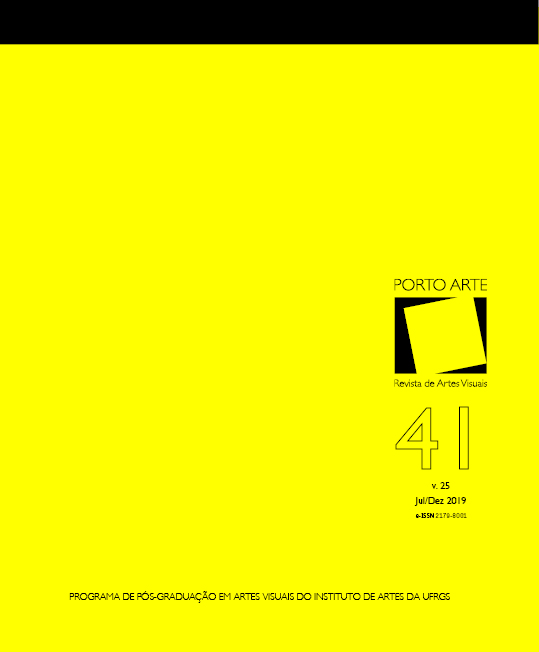Contributions of Charles S. Peirce to Creative Thinking.
DOI:
https://doi.org/10.22456/2179-8001.97215Palabras clave:
Peirce. Creativity. Abduction. Method. Imagination.Resumen
The thought of Charles S. Peirce can provide new keys for the study of creativity.It is possible to argue, based on the pragmatism that Peirce defended, that there is a form
of reasoning that joins logical soundness and imagination. Peirce’s scientific method,
whose power lies in a logical operation called abduction, provides important clues to
better understand how we make new discoveries, how we embody new ideas in creations
and, ultimately, how we think more creatively and effectively. Resumo
O pensamento de Charles S. Peirce pode fornecer novas chaves para o estudo
da criatividade. É possível argumentar, com base no pragmatismo defendido por
Peirce, que existe uma forma de raciocínio que une solidez lógica e imaginação.
O método científico de Peirce, cujo poder está em uma operação lógica chamada
abdução, fornece pistas importantes para entender melhor como fazemos
novas descobertas, como incorporamos novas ideias em criações e, em última
análise, como pensamos de forma mais criativa e eficaz.
Descargas
Citas
BODEN, M. (1999). “Computer Models of Creativity.” En Sternberg, R. (ed.), Handbook of Creativity, (pp. 351-371). Cambridge: Cambridge University Press.
CHIASSON, P. (2001). Peirce’s Pragmatism: The Design for Thinking. Amsterdam: Rodopi.
CUFFARO, H. K. (1995). Experimenting with the World: John Dewey and the Early Childhood Classroom. Nueva York: Columbia University Press.
DEWEY, J. (1969-1991). The Collected Works of John Dewey 1882-1953, Later Works (vol. 8). Carbondale: Southern Illinois University Press.
GHISELIN, B. (1954). The Creative Process. A Symposium. Berkeley: University of California Press.
HAUSMAN, C. R. (1987). “Philosophical Perspectives on the Study of Creativity.” En Isaksen, S. (ed), Frontiers of Creativity Research: Beyond the Basics, (pp. 380-388). Buffalo: Bearly.
HULL, K. (1994). “Why Hanker after Logic: Mathematical Imagination, Creativity and Perception in Peirce’s Systematic Philosophy.” Transactions of the Charles S. Peirce Society, XXX (2), 271-295.
PEIRCE, C. S. (1931-58). Collected Papers, vols. 1-8, C. Hartshorne, P. Weiss y A. W. Burks (eds.). Cambridge: Harvard University Press. (CP) Como sempre, CP é seguido pelo volume e a numeração dos parágrafos.
PEIRCE, C. S. (1978). C. S. Peirce Papers, 32 rolos de microfilmes dos manuscritos conservados na biblioteca Houghton, Cambridge, Harvard University Library, Photographic Service. (MS)
PEIRCE, C. S. (1992). Reasoning and the Logic of Things. The Cambridge Conference Lectures of 1898, K. L. Ketner (ed.). Cambridge: Harvard University Press. (RLT)
SINGER, J. L. (1999). “Imagination.” En Runko, M. A y Pritzker, S. R. (eds.), Encyclopedia of Creativity, pp. 13-26. San Diego: Academic Press.
Archivos adicionales
Publicado
Cómo citar
Número
Sección
Licencia
Autores que publicam nesta revista concordam com os seguintes termos:
Autores mantêm os direitos autorais e concedem à revista o direito de primeira publicação, com o trabalho licenciado sob a Creative Commons Atribuição-NãoComercial-CompartilhaIgual 4.0 Internacional (CC BY-NC-SA 4.0).
Autores têm autorização para assumir contratos adicionais separadamente, para distribuição não exclusiva da versão do trabalho publicada nesta revista, como publicar em repositório institucional, com reconhecimento de autoria e publicação inicial nesta revista, quando for o caso.
Os artigos são de acesso aberto e uso gratuito, com atribuições próprias em atividades educacionais, de pesquisa e não comerciais.


